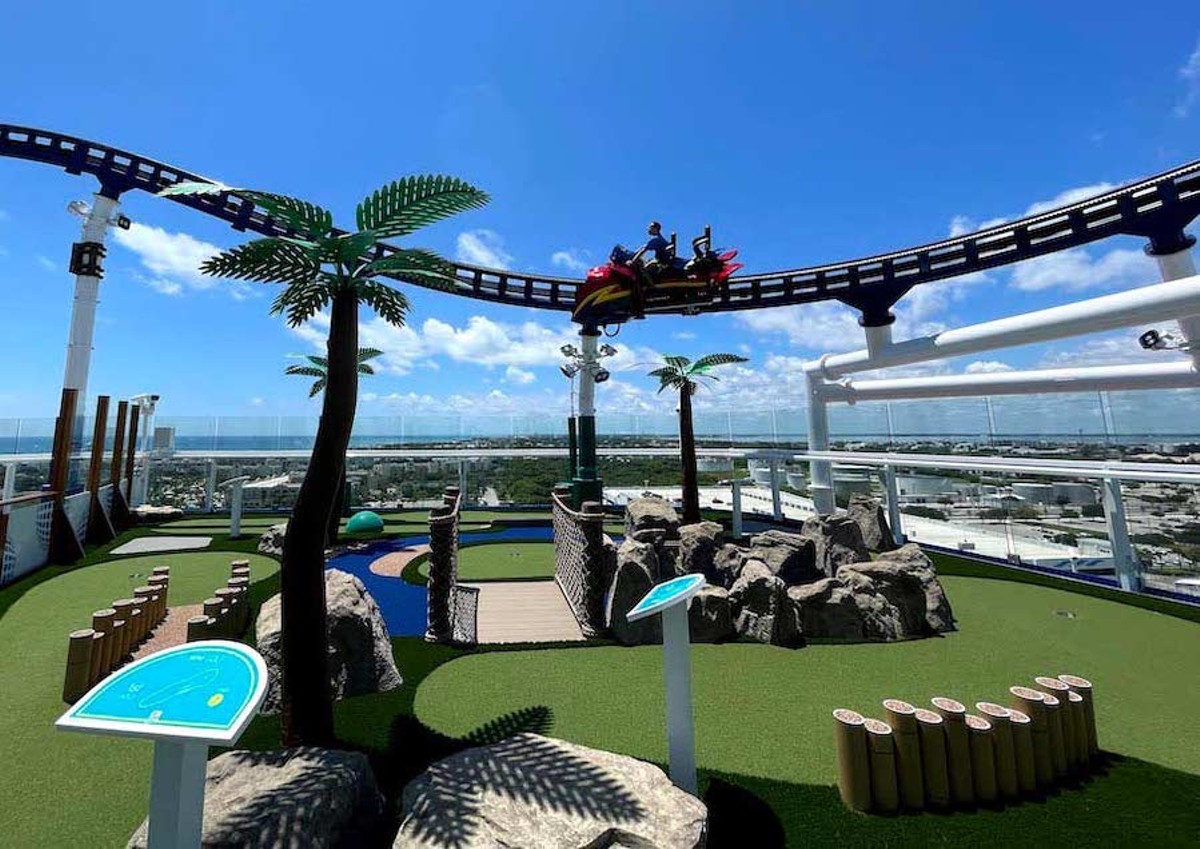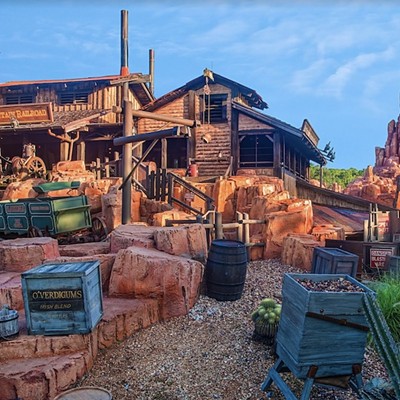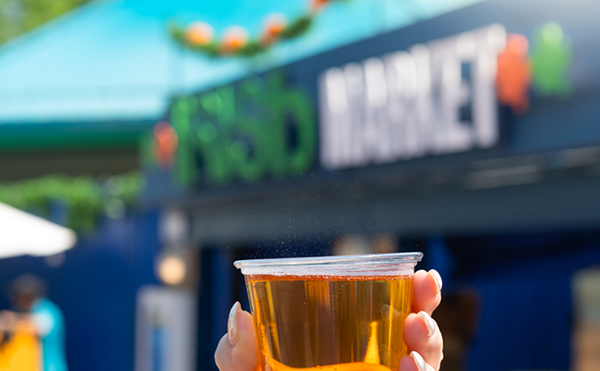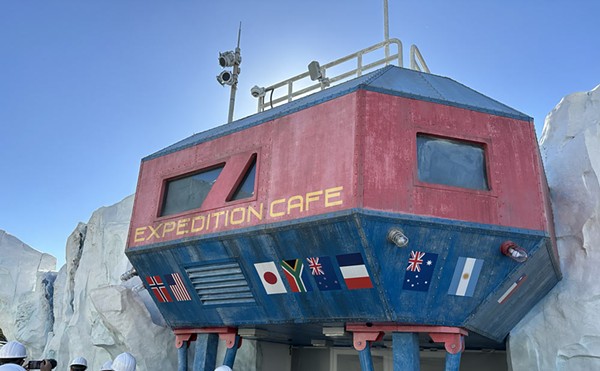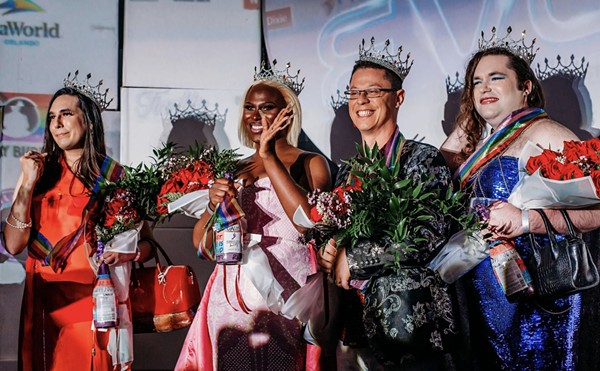Almost exactly 10 years ago, I set sail on my first-ever cruise aboard the since-scrapped Carnival Sensation and found that "bargain-basement vacation" to be better than I expected. However, after experiencing a few of its competitors, and suffering through a second Carnival cruise full of indifferent service and inebriated passengers, I swore to never again set foot on one of their ships. With the COVID-19 Delta variant surging in Florida, this would seem to be an unlikely time to violate that vow, and an even less opportune time to launch a brand-new megaship. But Carnival is charging out of the pandemic with last weekend's inaugural sailing of the massive Mardi Gras, which boasts the only thing that could inspire me to drive out to Port Canaveral right now: the world's first roller-coaster at sea.
Like most modern cruise ships, the Carnival Mardi Gras is home to an array of onboard activities that go way beyond shuffleboard, from a charming mini-golf course to a challenging ropes climb, but the ship's headline attraction is Bolt, billed as the "Ultimate Sea Coaster." Ever since I saw the two-seat ride vehicle — which resembles a jet-ski more than a coaster car — unveiled at IAAPA in 2019, I've been itching to experience this one-of-a kind thrill, and I was lucky enough to be one of the very first members of the general public to enjoy it.
Unfortunately, Bolt frankly failed to live up to my elevated expectations. The single-rail track wraps only around the rear of the boat, providing a good view of the kiddie splash pad but not so much the open sea. Front-seat riders can control their speed (up to 37 mph) using a motorcycle-style throttle and boost button, and I got a nice burst of acceleration right out of the gate, but the powered coaster seemed to hesitate repeatedly through its brief 720-foot course and never generates the sensation of gravity-driven momentum you'd expect from a coaster; instead, it feels more like a fast monorail.
Bolt would be worth trying once or twice for the novelty, but Carnival is charging $15 per ride, whereas the water coasters on Disney's ships — which I enjoyed more — are included. I certainly wouldn't book a cruise based around it, considering the ride shut down for hours shortly after my one lap.
Although its hyped E-ticket is a misfire, the Mardi Gras does feature a number of upgrades over older Carnival vessels that could inform future land-locked attractions.
First and foremost, it's the first cruise ship in the Americas powered by liquefied natural gas, which Carnival touts as a more climate-friendly alternative to other fossil fuels. New technology also impacts the guest experience from the minute you enter the terminal and get scanned for a remarkably efficient facial recognition entry system, not dissimilar to the one rumored to be replacing traditional turnstiles at the upcoming Epic Universe park. And once on board, Carnival's updated smartphone app can provide everything from food and drink delivery to virtual queuing in an effort to promote social distancing.
That was far from the only indication of the ongoing pandemic during the preview for press and travel agents that I attended on the day before Mardi Gras' launch. Digital signage reminding guests to sanitize is omnipresent, and I had to fill out multiple health declarations and show my vaccination card before even approaching the gangplank. Hand-washing stations are also ubiquitous, thankfully, as the ship's numerous sliding doors require a fingerprint to open. However, thanks to Gov. DeSantis, Carnival must permit unvaccinated guests to sail from Florida (with testing and insurance requirements), and can only mandate that unvaccinated passengers remain masked indoors. With health officials recommending everyone mask up indoors regardless of vaccination status, I'm surprised Carnival hasn't followed Walt Disney World and required masks for all for the sake of consistent enforcement.
I chose to remain masked (making me the distinct minority) but I made an exception in order to sample dishes from a dozen of the ship's restaurants, all of them far more creative and delicious than what I remember from my past Carnival cruises.
Ultimately, the one thing that Carnival doesn't seem to have significantly updated is their aesthetic, which was what I dinged them for most heavily a decade ago. The ship's atrium is a perfect example: It sports a stunning array of spinning LED screens that can slide away to expose floor-to-ceiling windows, but it's positioned off to the side, robbing arrivals of a "wow" reveal, and is bathed in a garish mishmash of color palettes that makes Mardi Gras feel more like a shopping mall (albeit an upscale one) than the coherently themed resort it aspires to be.
More importantly, the atrium stage's content is slickly produced but utterly generic, with no memorable characters (beyond the grating kilt-clad cruise director) to create an emotional connection with. Curiously, I spotted Universal Parks CEO Tom Williams at the roller-coaster's ribbon cutting. Bolt may be a bust, but if Carnival could strike a deal to use Universal's intellectual property, it might give Mardi Gras and her sisters ammo to battle Disney's ever-expanding fleet.

